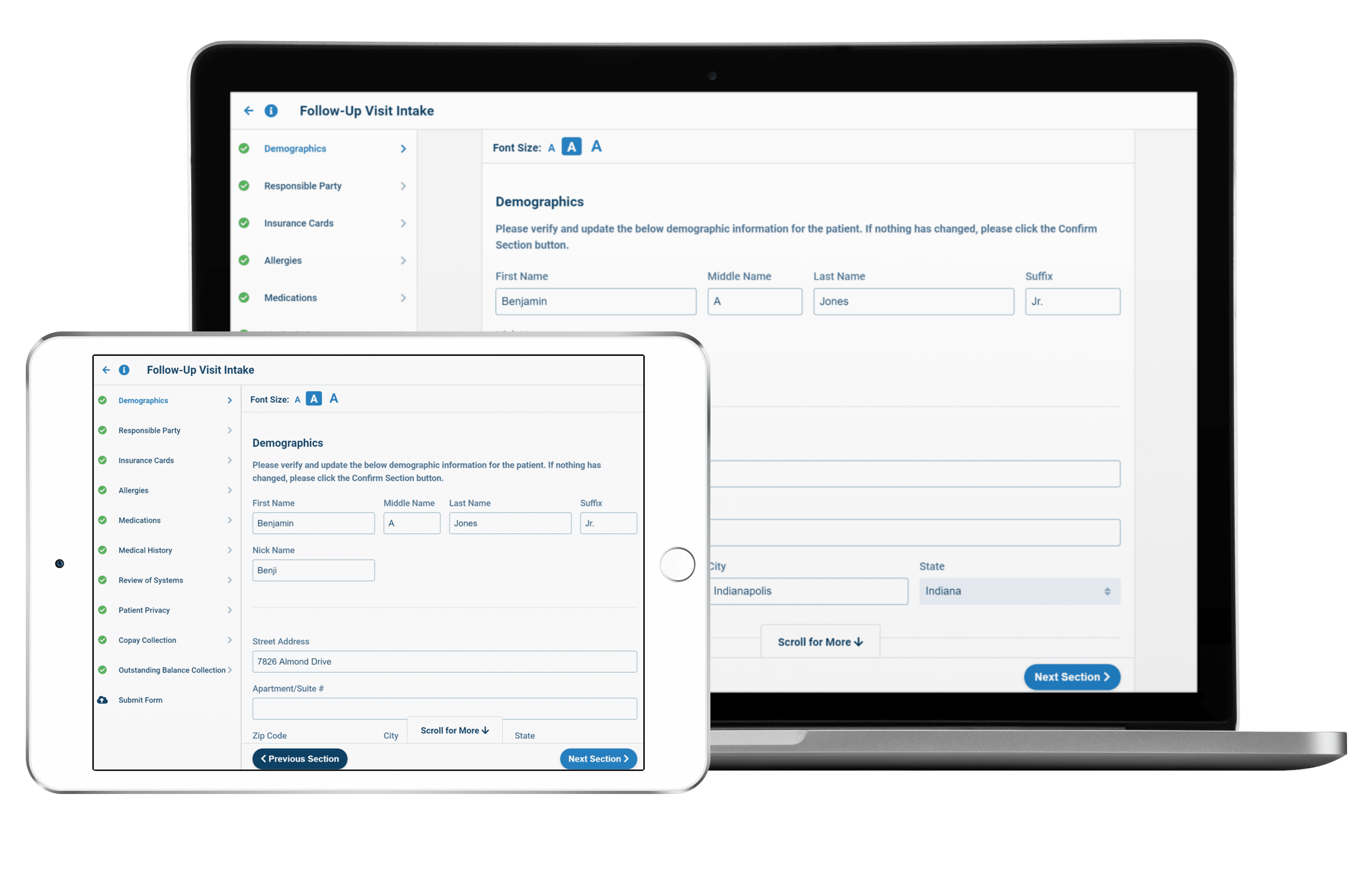
Smarter Choices for Practice Efficiency
A recent industry study of more than 1,000 healthcare providers showed that running a p...
February 13, 2019
Every day there are patients in the office who complain about having to wait to visit with their provider past their scheduled visit time. There are patients who grow frustrated with having to repeatedly fill out forms before they can visit with their doctor. There are patients who are running in the door 10 minutes late for their visit who then have to grab a pen and fill out their patient intake forms. Then there are those patients whose handwriting is so hard to read that the best guess is all you have as to what they wrote down. Paper intake forms have caused delays in wait times, a growing frustration in patients, and a decrease in office efficiency. How should providers address the negative impact of the paper intake form in 2019? The solution is intelligent intake, a digital patient intake form that offers both patients and providers the answer they are looking for in a patient intake form.
Impact of a Digital Patient Intake Form:
1) Increased Efficiency
A digitized version of the patient intake form increases efficiency in a multitude of ways. The first being that it has a direct effect on wait times in the office. With the digital intake form, patients fill out the forms on their computer or mobile device prior to coming into the office. They are sent a reminder to fill out the forms or verify the information in their chart prior to the visit. This eliminates the need to do it once they get in the office. This also decreases wait times by eliminating the time it takes to fill out forms in person, putting patient visits on the fast-track. The second way that the digital patient intake form increases efficiency is by eliminating the responsibility on the front office staff to transcribe the paper documents into the patient’s Electronic Health Record. With the digital forms, the information that the patient inputs automatically is uploaded into their chart and can be updated at any time.
2) Improved Accuracy
The digital patient intake form improves accuracy in the process by eliminating the transcribing process. As mentioned before, sometimes patients have illegible handwriting. When possible, the person transcribing should verify the information with the patient, but this is not always the case. This leads to an increased number of errors in the patient’s chart that are not always caught. Even if the patient fills out a new form down the road, their handwriting is still difficult to read, so errors may go months if not years without ever being corrected. The digital patient intake form improves accuracy in the patient’s chart because the patient is typing it directly into their chart, confirming it, and updating it with each visit. It is simple to see when a mistake has been made and simple to correct it. It is also simple to update information should a patient’s information change. With the elimination of transcribing, the number of errors in the patient intake form goes down substantially.
3) Increased Patient Satisfaction
While one might think that a these forms would not increase patient satisfaction that much, it increases it quite a bit. With decreased wait times, modern digital processes, and simple software, patients feel that their provider is more accessible. The digital patient intake form is one tool that helps a patient feel that their provider considers about what makes their life simpler in terms of their care. It is convenient for them to take the time to fill it out at home versus in a hurry in the office. Patients also want their providers to make as much of their experience digital as possible. They search for this in many tools like the patient portal for communication and understanding and Telehealth for visits. It makes sense that patients who want their providers to move into the digital age of technological healthcare to include their patient intake forms in that as well. The digital patient intake form increases patient satisfaction by addressing this.
Improve efficiency by relieving responsibility from your front office staff and decreasing wait times. Improve accuracy by eliminating the transcription process as well as allowing patients to fill out their forms at home. Lastly, improve satisfaction by streamlining their visits and bringing another aspect of their medical care into the digital age.